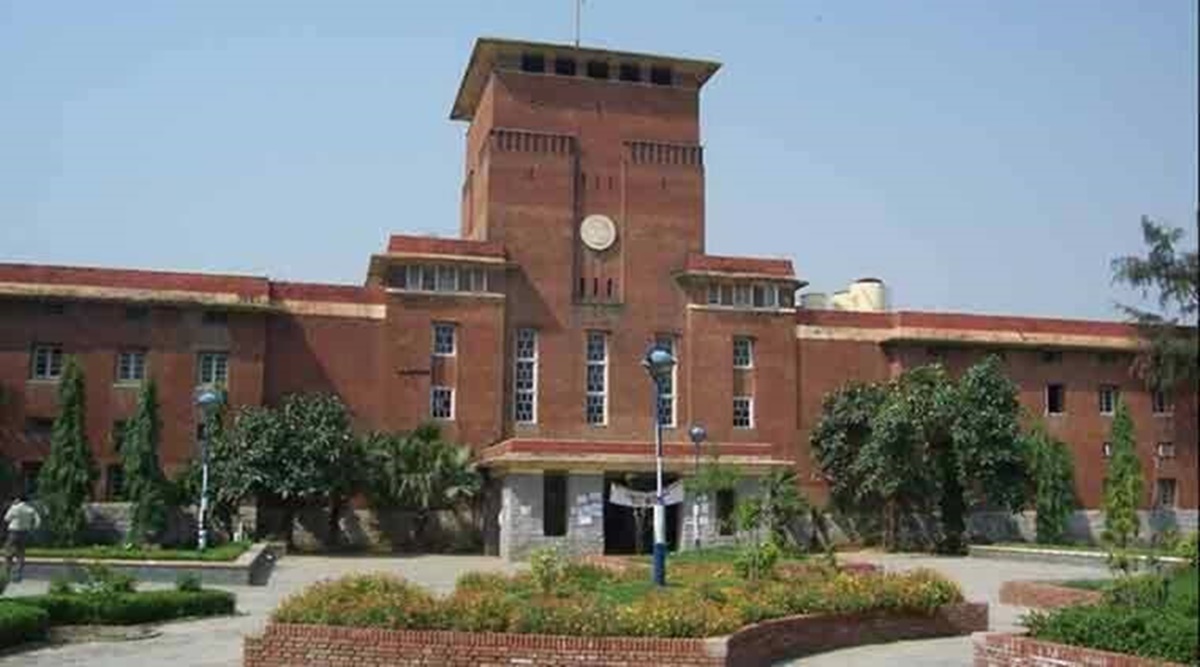 On Sunday, the university held the inaugural ceremony of its year-long centennial celebrations. (File)
On Sunday, the university held the inaugural ceremony of its year-long centennial celebrations. (File)From its inception in colonial India to its role in India’s struggle for Independence to its current position as home to more than six lakh students — Delhi University completed its hundred-year long journey on Sunday.
The university came into being a hundred years ago in 1922. The Bill to constitute Delhi University was introduced in the Central Legislative Assembly on January 16, 1922, and it was passed on February 22. It then went for approval to the Council of States and it was passed there on February 28, 1922. The Viceroy gave his assent on March 5, the notification was issued on April 6 and the university came into force on May 1, 1922, with Viceroy Lord Reading as the first Chancellor and Hari Singh Gour the first Vice-Chancellor.
On Sunday, the university held the inaugural ceremony of its year-long centennial celebrations. Charting the long journey and growth of the university, Vice-Chancellor Yogesh Singh said, “We started with only three colleges — St. Stephen’s, Hindu and Ramjas. Now we have 90 colleges. In 1922, we had two faculties — Arts and Science. Now we have 16… eight departments, now we have 86 departments. We started with just 750 students, now we have 6,06,228 students. When we started in 1922, we only had 1,380 books in the library. But now we have 17,00,853 books, and in addition to this we have digital media and different types of databases.”
He stated that the university produced its first PhD in 1948. After 10 years, in 1958, 28 PhDs were produced. He juxtaposed this with 802 PhDs awarded in the 2022 convocation.
Best of Express Premium
“In 1930, there were only 82 girls in the university. After ten years, in 1940, it was 340. In 1950, it was 1,537 girls. In 2022, you will all be happy to know, we have 3,24,067 girls, which is more than 50% of the total student population in the university,” he said.
To mark the beginning of its centennial celebrations, the university released a commemorative postage stamp and a commemorative Rs 100 coin. It also released its new Undergraduate Curriculum Framework — already available in English — in Hindi, Sanskrit and Telugu.
“Our vision is to place the University of Delhi in the league of the 200 best universities in the world. We have the capacity, capability and potential to do it and if we will be able to do it, we will be able to fulfil the dream of every Indian and we will do it. We will take all necessary steps and make all necessary strategies to achieve the same,” said Singh.
The university’s Chancellor, Vice-President M Venkaiah Naidu, also emphasised the need for DU and other Indian universities to establish themselves in international rankings.
“We should aim to become knowledge centres placed in the first ten academic institutions of the world. That should be the aim. We have so much knowledge… Everybody has some talent. To recognise and promote that talent, that is what is required. Our girls and boys who are going abroad are excelling everywhere… Then why are we lagging in becoming a centre of excellence… This is a question every Vice-Chancellor, every teacher, every administrator should really think about every day and try to reach the goal,” he said.
Union Minister of Education Dharmendra Pradhan observed that the university will complete 125 years when India completes 100 years of Independence, and stated that it needs to challenge itself to reach new milestones by then.
“Can we, in the coming three to four years think of a paperless university? Can we in the coming days, within 100 days — through a hackathon, suggestions, or a competition — have all stakeholders think of 100 solutions for the country’s challenges in the form of a charter. Can DU become an incubator for the country’s issues? If DU doesn’t become (one), then who will take the responsibility for this? Can we make an alumni portal? I see many powerful, influential people before me. DU has given you everything… the time has come to give back to DU… can DU’s alumni get together and create a model for the country for alumni contribution?”
- The Indian Express website has been rated GREEN for its credibility and trustworthiness by Newsguard, a global service that rates news sources for their journalistic standards.

